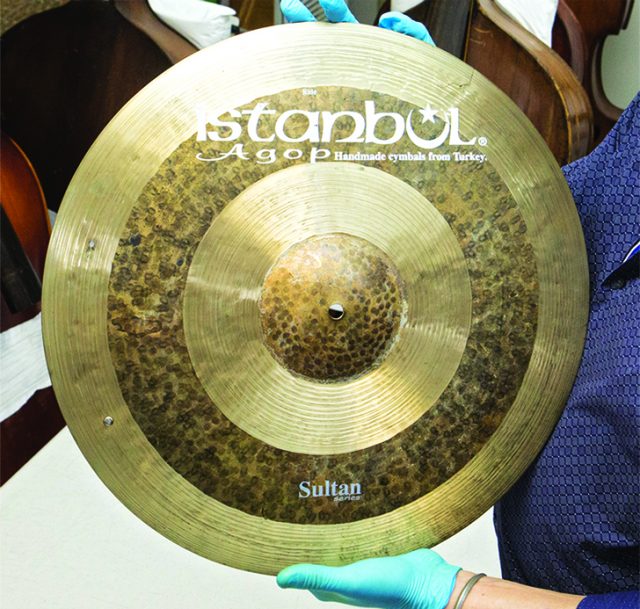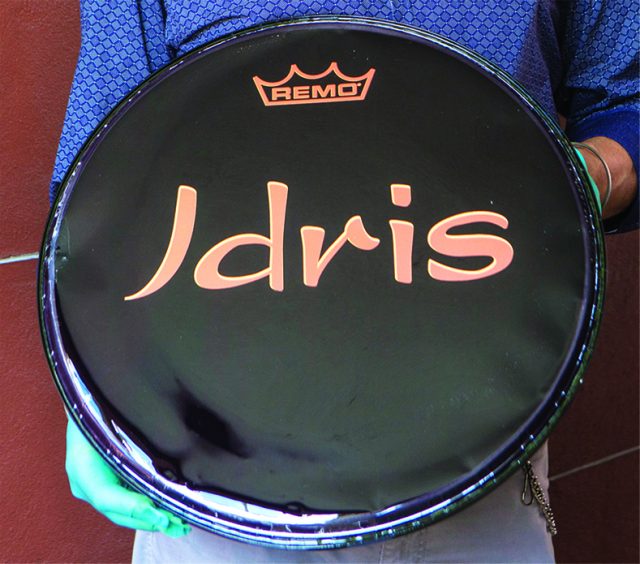Winter 2016
The Power of Soul
Remembering drummer Idris Muhammed’s versatile, funkified and oft-sampled body of work
Published: December 8, 2016
Last Updated: February 20, 2019

Courtesy of the New Orleans Jazz and Heritage Archive
Muhammed was born in the musically fertile 13th Ward of New Orleans. He grew up around the corner from the Neville Brothers. As a child he followed marching bands and parade bands and the Mardi Gras Indian tribes (including one led by Big Chief Donald Harrison Sr.) through his neighborhood. In an interview at alllaboutjazz.com, he described New Orleans as being “thick with rhythms.” In another interview with Drum Magazine, he recalled, “I was so small, I could fit under the bass drum player! I really liked the bottom end, so I would dance under it. I could really feel it. The guy would say, ‘Get out of here, or I’ll hit you with this mallet!’ So, all of those rhythms really sunk in, and I think it made me play the way I do.” At 14, he joined neighbor Art Neville’s band, the Hawkettes, which led to his appearance on some of Art’s famous Ace Records sides, including Neville’s version of “Rockin’ Pneumonia and the Boogie Woogie Flu.” As he started gigging more around town, he backed up everyone from Muddy Waters to Big Joe Turner and learned their repertoire as well as the top 10 hits on the jukeboxes. His varied experience is typical of New Orleans musicians, as reflected in the many local players, including drummers Earl Palmer and Ed Blackwell, who were known for their proficiency and versatility. Muhammad also did studio work, contributing to popular recordings including Joe Jones’ “You Talk Too Much,” Larry Williams’ “Short Fat Fannie,” and, most famously, when he was just 16 years old, on Fats Domino’s “Blueberry Hill.”
Muhammed was introduced to Sam Cooke in a restaurant in New Orleans, where he legendarily auditioned with his hands on the tabletop.
Through Joe Jones, Muhammed was introduced to Sam Cooke in a restaurant in New Orleans, where he legendarily auditioned with his hands on the tabletop. He went on the road with Cooke, then started working with Jerry Butler and Curtis Mayfield in Chicago. Mayfield cut him in on some of the publishing for his Curtom company, so Muhammed had a little bit of money when he moved to New York City in the mid-1960s. In New York, he said, they played a certain kind of funk, but he brought the New Orleans sound where he “played from the bottom.” Slowly he became immersed in the jazz world through gigs with Kenny Dorham, Horace Silver and Betty Carter. Muhammed also played in the house band at the famed Apollo Theater, where the New Orleanian’s versatility was invaluable.
A gig at a Harlem nightclub gig led Muhammed to the bright lights of Broadway when he accepted a job in the orchestra for an off-Broadway musical. At the theater in the East Village, he was surprised to find the actors wearing long hair and dirty, ripped clothes and smoking marijuana. Muhammed balked at this crazy scene but was convinced to come back. The show soon made its debut on Broadway as the American Tribal Love-Rock Musical “Hair.” Muhammed stayed with “Hair” for more than four years, composing the drum parts and playing on the original cast album.


Photos by Mark J. Sindler
While working with “Hair,” Muhammed’s studio career started to take off. Jazz was moving away from the abstract and back toward funk, rock and soul. Muhammed’s subtle New Orleans styles were the backbone for organ-based, rhythm and blues–influenced hits such as Lou Donaldson’s “Alligator Bogaloo” and Charles Earland’s “Black Talk!” These albums were best-sellers at the time, and their songs returned during the Acid Jazz movement of the 1990s.
When Muhammed quit “Hair,” he fulfilled a promise to Roberta Flack to join her band. He toured with Flack and played on her hit “Killing Me Softly.” Off the road, he made more than 150 recordings for the Prestige label, backing jazzmen including Earland. The fusion- and funk-leaning label CTI also hired Muhammed as a sideman and as a leader, resulting in four solo records, including the energetic funk releases “Power of Soul” and “House of the Rising Sun.” Both Prestige and CTI favored recording at engineer Rudy Van Gelder’s studio in Englewood Cliffs, New Jersey. Idris enjoyed a special musical relationship with Van Gelder, who perfected a technique to make Muhammed’s drums sound present and deep without turning overwhelming. As hip-hop musicians and producers integrated samples into their music, they frequently turned to Muhammed’s tracks. Everyone from Beck to Tupac sampled his song “Crab Apple,” and “Loran’s Dance” got a second life as the basis for “To All The Girls, ” the lead track on the Beastie Boys’ 1989 release “Paul’s Boutique.”
Muhammed moved to Europe for most of the 1980s and 90s but still found time to play with musical giants. His synthesis of Latin, funk, rhythm and blues, New Orleans, and free time made him the first-call drummer for everyone from Sonny Rollins to John Scofield to Pharoah Sanders. He spent several years on the road with pianist Ahmad Jamal, who tends to like New Orleans drummers. Herlin Riley currently works with Jamal, and Vernel Fournier preceded Muhammed in Jamal’s band. Muhammed was especially adept at playing the Latin/slow second-line rhythms of Jamal’s 1958 hit “Poinciana.”

Photo by Marc J. Sindler
Muhammed moved back to New Orleans in 2011. He still had roots Uptown,1 and members of his family parade with the Prince of Wales Social Aid and Pleasure Club in October. One year Muhammad even masked as a Mardi Gras Indian with Donald Harrison Jr.’s Congo Square Nation. In 2012 he published his autobiography, “Inside the Music: The Life of Idris Muhammed.” His health worsened during this period, and he died on July 29, 2014.
The legacy of Muhammed’s long and varied career continues through his music, played on the bandstand and sampled in hip-hop. He fused the specific rhythms of New Orleans into jazz and funk and made indelible, unforgettable music in the process.

